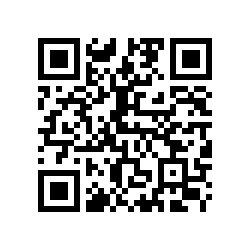Prediksi Penyakit Stroke Menggunakan Metode Random Forest
(1) Universitas Muhammadiyah Sidoarjo, Sidoarjo, Indonesia
(2) Universitas Muhammadiyah Sidoarjo, Sidoarjo, Indonesia
(3) Universitas Muhammadiyah Sidoarjo, Sidoarjo, Indonesia
(*) Corresponding Author
Abstract
Full Text:
PDFReferences
M. A. As Sarofi, I. Irhamah, and A. Mukarromah, “Identifikasi Genre Musik dengan Menggunakan Metode Random Forest,” Jurnal Sains dan Seni ITS, vol. 9, no. 1, pp. 79–86, 2020, doi: 10.12962/j23373520.v9i1.51311.
E. Agustin, A. Eviyanti, and N. Lutvi Azizah, “Deteksi Penyakit Epilepsi Melalui Sinyal EEG Menggunakan Metode DWT dan Extreme Gradient Boosting,” vol. 7, no. 1, pp. 117–127, 2023, doi: 10.30865/mib.v7i1.5412.
N. Permatasari, “Perbandingan Stroke Non Hemoragik dengan Gangguan Motorik Pasien Memiliki Faktor Resiko Diabetes Melitus dan Hipertensi,” Jurnal Ilmiah Kesehatan Sandi Husada, vol. 11, no. 1, 2020, doi: 10.35816/jiskh.v11i1.273.
J. Antares, “Artificial Neural Network Dalam Mengidentifikasi Penyakit Stroke Menggunakan Metode Backpropagation ( Studi Kasus di Klinik Apotik Madya Padang ),” Djtechno: Jurnal Teknologi Informasi, vol. 1, no. 1, 2021, doi: 10.46576/djtechno.v1i1.965.
M. A. As Sarofi, I. Irhamah, and A. Mukarromah, “Identifikasi Genre Musik dengan Menggunakan Metode Random Forest,” Jurnal Sains dan Seni ITS, vol. 9, no. 1, 2020, doi: 10.12962/j23373520.v9i1.51311.
F. Akbar, H. Wira Saputra, A. Karel Maulaya, M. Fikri Hidayat, and Rahmaddeni, “Implementasi Algoritma Decision Tree C4.5 dan Support Vector Regression untuk Prediksi Penyakit Stroke,” vol. 2, no. October, pp. 61–67, 2022.
U. Amelia et al., “Implementasi Algoritma Support Vector Machine ( Svm ) Untuk Prediksi Penyakit Stroke Dengan Atribut Berpengaruh,” … Student Journal for …, vol. III, pp. 254–259, 2022.
M. N. Maskuri, K. Sukerti, and R. M. Herdian Bhakti, “Penerapan Algoritma K-Nearest Neighbor ( KNN ) untuk Memprediksi Penyakit Stroke Stroke Desease Predict Using KNN Algorithm,” Jurnal Ilmiah Intech : Information Technology Journal of UMUS, vol. 4, no. 1, pp. 130–140, 2022.
A. Byna and M. Basit, “Penerapan Metode Adaboost Untuk Mengoptimasi Prediksi Penyakit Stroke Dengan Algoritma Naïve Bayes,” Jurnal Sisfokom (Sistem Informasi dan Komputer), vol. 9, no. 3, pp. 407–411, 2020, doi: 10.32736/sisfokom.v9i3.1023.
D. E. Cahyani, “Penerapan Machine Learning Untuk Prediksi Penyakit Stroke,” Jurnal Kajian Matematika dan Aplikasinya, vol. 3, no. January, pp. 8–14, 2022, doi: 10.17977/um055v3i1p15-22.
D. Prajarini, S. Tinggi, S. Rupa, D. Desain, and V. Indonesia, “Perbandingan Algoritma Klasifikasi Data Mining Untuk Prediksi Penyakit Kulit,” Informatics Journal, vol. 1, no. 3, p. 137, 2016.
R. S. Rohman, R. A. Saputra, and D. A. Firmansaha, “Komparasi Algoritma C4.5 Berbasis PSO Dan GA Untuk Diagnosa Penyakit Stroke,” CESS (Journal of Computer Engineering, System and Science), vol. 5, no. 1, p. 155, 2020, doi: 10.24114/cess.v5i1.15225.
M. A. As Sarofi, I. Irhamah, and A. Mukarromah, “Identifikasi Genre Musik dengan Menggunakan Metode Random Forest,” Jurnal Sains dan Seni ITS, vol. 9, no. 1, pp. 79–86, 2020, doi: 10.12962/j23373520.v9i1.51311.
J. Xu, Y. Zhang, and D. Miao, “Three-way confusion matrix for classification: A measure driven view,” Inf Sci (N Y), vol. 507, 2020, doi: 10.1016/j.ins.2019.06.064.
DOI: https://doi.org/10.30645/kesatria.v4i4.242
DOI (PDF): https://doi.org/10.30645/kesatria.v4i4.242.g240
Refbacks
- There are currently no refbacks.
Published Papers Indexed/Abstracted By:














